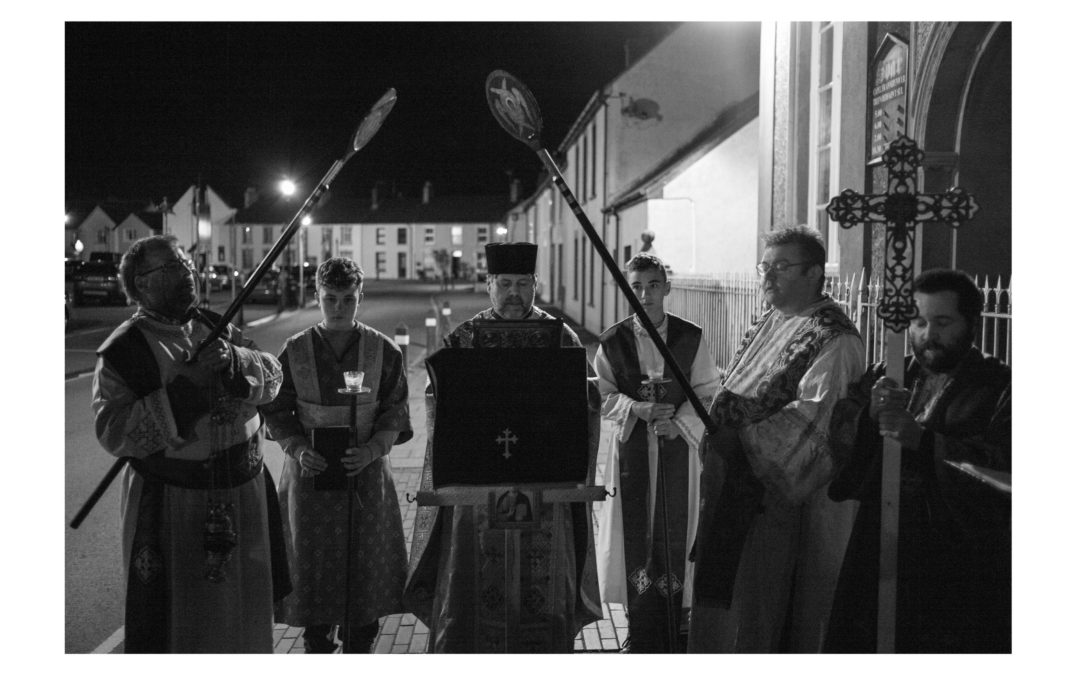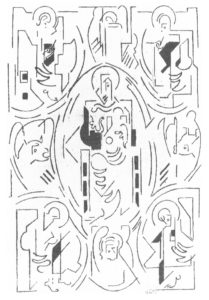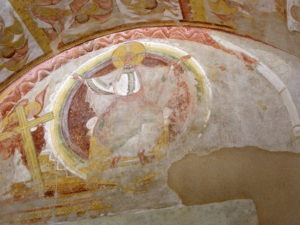
by lampeter | Sep 11, 2019 | Discussion
I was pleased to be asked by Father Tim to introduce the topic of ‘mission’ and explore what that might mean. Part of the introduction was that there is both ‘internal’ and ‘external’ mission, in other words the continual growth of the Orthodox faithful is absolutely essential as the basis from which external mission flows. Orthodoxy is primarily a faith of lived growth…to paraphrase what Bishop Athanasios explained to me on the phone from the offices of the Patriarchate last week, “We do not wear the shoes we wore as a child.” So, external mission must first flow from continual internal renewal and maturation. After a broad discussion we rounded up and discussed practical ways that we might increase our visibility and induce others to experience Orthodoxy.
Here were some practical ideas:
1) We shall continue holding Orthodox vespers services in host parishes, as we had done in Nevern (I believe there is another scheduled for Newport).
2) We will strategically post our leaflets in key places within a twenty or thirty mile radius of Lampeter… I shall acquire a map for us to put pins in and a list of key places can be recorded as visited.
3) A boost was suggested for our Facebook and webpage to increase visibility – this incurs a fee of £20-£30. This might be better twinned with a particular event, service or open day.
4) If talks in local schools or community groups could be secured then that was encouraged.
5) If local media could cover an event (blessing of the waters, St Cybi’s well, Vespers service in host parish, school talk, prison visit, community project?) then that would increase our visibility significantly.
I’ll get a visitor book also to harvest as many old and new contacts as possible. If you have not yet added your details to the Lampeter Orthodox Church contacts list then please do send them to Hellier Johns at: 83hellier@gmail.com
I’ve expanded on some of these ideas a bit from points 3-5 but the germ of it was there during the discussion.
Your prayers in Christ.
Michael
by lampeter | Aug 30, 2017 | Discussion
I have a new article published in the Orthodox Arts Journal – From Cubism to the Romanesque (to the Orthodox icon?). It follows on from my previous piece about the attempt of Charlemagne and his court to attack the Seventh Ecumenical Council and the veneration of icons. In that article, drawing on the arguments of the Cubist painter, Albert Gleizes, I drew a distinction between ‘rhythmic’ art and figurative or imitative – representational art. For all its stylisation and ‘abstraction’ the icon is a representational art, it embodies a ‘likeness’ to the Person represented. The question then is what role if any an essentially rhythmic approach, such as was, or may have been, embodied in Romanesque art, can play.

A ‘rhythmic’ Christ in Glory surrounded by the Evangelists by Albert Gleizes.

A Romanesque Christ in Glory (St-Savin-sur Gartempe)
Peter
by lampeter | Jul 17, 2017 | Discussion
An article I have written has been published by the online Orthodox Arts Journal under the title The Seventh Ecumenical Council, the Council of Frankfurt and the Practice of Painting. The Seventh Ecumenical Council in 787 AD gave authoritative approval to the veneration of icons. The Council of Frankfurt (794 AD) was summoned by Charlemagne as part of his project of distancing the Western Church from the Roman Empire centred on Constantinople. Charlemagne wanted to condemn the practise of venerating icons but was inhibited by the Pope (Hadrian I). I am arguing that although this was all obviously political there was a real difference between the classical culture of Rome and the culture of the peoples gathered round Charlemagne who had never been part of the Empire, most notably the Celts (Irish and Welsh) and Anglo Saxons (in particular the Northumbrians who had been converted to Christianity from Ireland). The main texts arguing for the veneration of icons, by St John of Damascus and St Theodore the Studite, were unknown in the West, but if they had been known, I suggest that the ‘insular’ monks would not have understood them. The argument was based on the idea that the artist’s job was to produce a likeness of something in the natural world. The insular (Celtic/Anglo Saxon) idea was quite different. I characterise it as ‘rhythmic’ and try to give a summary account of it.




Recent Comments